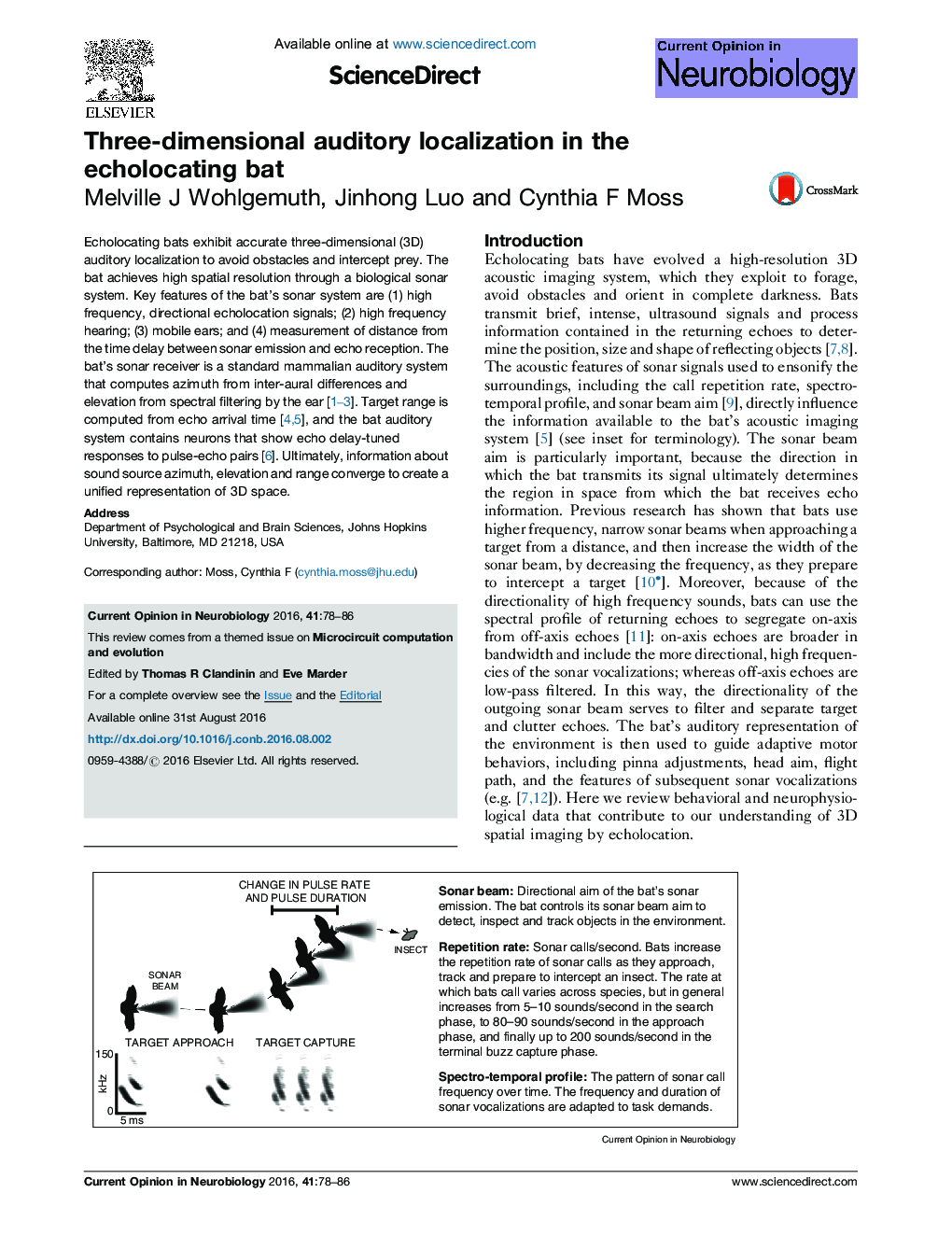| Article ID | Journal | Published Year | Pages | File Type |
|---|---|---|---|---|
| 6266106 | Current Opinion in Neurobiology | 2016 | 9 Pages |
â¢Echolocating bats use acoustic information to build a 3D representation of space.â¢Auditory selectivity to direction and distance are integrated in 3D space neurons.â¢Auditory localization involves interconnected circuits in the auditory pathway.â¢Range-tuned neurons show dynamic responses that change with stimulus context.
Echolocating bats exhibit accurate three-dimensional (3D) auditory localization to avoid obstacles and intercept prey. The bat achieves high spatial resolution through a biological sonar system. Key features of the bat's sonar system are (1) high frequency, directional echolocation signals; (2) high frequency hearing; (3) mobile ears; and (4) measurement of distance from the time delay between sonar emission and echo reception. The bat's sonar receiver is a standard mammalian auditory system that computes azimuth from inter-aural differences and elevation from spectral filtering by the ear [1-3]. Target range is computed from echo arrival time [4,5], and the bat auditory system contains neurons that show echo delay-tuned responses to pulse-echo pairs [6]. Ultimately, information about sound source azimuth, elevation and range converge to create a unified representation of 3D space.
